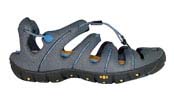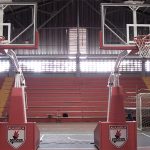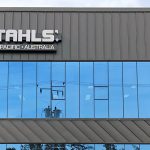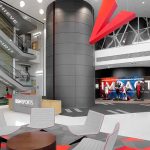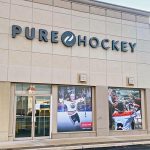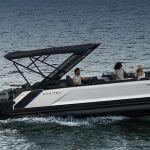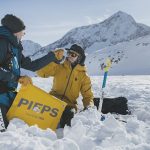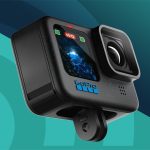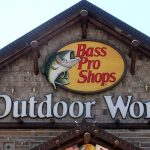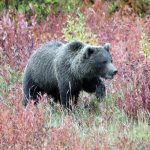The backpacking and hiking boom of the 70s was based on the notions of people like Colin Fletcher, author of The Complete Walker, who felt the need to simplify their lives through nature and the simple act of walking for days on end through wilderness. People were looking for a way to unplug themselves from their daily lives.
Today, most baby boomers have little time to spend walking through the woods for days on end. Many are lucky just to have a weekend free, and the majority is looking for activities that can be done in a day. In addition, most baby boomers are now parents, and the next generation is looking at wilderness in a completely different light. In todays world of smaller, more portable electronics, the youth culture is more reluctant than ever to un-plug themselves from their world. They have come to expect a certain level of technology and luxury in their lives, even when they go on a “wilderness” vacation. This has created many challenges for not only the outdoor retailer, but also the manufacturers who make the gear, the guide services and institutions that teach outdoor skills, and even the parks and wilderness areas that provide the outdoor destinations.
The result is that outdoor specialty customers are following different buying patterns. According to OIAs State of the Industry Report, big tent sales are up, along with many other types of heavier equipment designed for car camping. At the same time, sales of fast & light, done-in-a-day gear are on the rise. These two products occupy opposite ends of the weight and performance spectrum and on the surface these two trends seem to be at odds with each other. The most obvious conclusion is that two different types of customer are buying two different types of gear. However, taking a closer look at todays outdoor consumer shows a different picture.
The specialty outdoor retail customers primary activities were once backpacking and wilderness camping, but now, more people are base-camping closer to the car for a weekend and making day-trips into the wilderness from there.
Essentially, todays consumer is looking for more activity in less time. Because the base-camp tent is generally pitched within 50 yards of the car, there is much less of a weight concern with that product. However, customers are still counting ounces when it comes to the gear that they need to carry into the wilderness. When it comes to backpacks, footwear, and even rain and storm gear, lighter is still better.
Darren Bush, co-owner of Rutabaga, said that his shop is seeing this trend play out not only in hiking and camping sales, but also in paddlesports. “Its not just your average everyday customer who is changing the way they get outside, its your life-long outdoor enthusiast and even people who are in the industry,” he said. “I cant afford to be out of the office for a week three or four times a year. Id rather go on six long weekend trips. The same is true across the board.”
Bush also said that this trend is changing the way his customers are buying boats. While big, expedition-sized kayaks and canoes still sell-through, more people are looking at smaller, more maneuverable touring boats that still have enough carrying capacity to accommodate base-camping gear.
Hud Knight, camping buyer for Backcountry.com, said that his team in Utah is seeing many of the same trends. “I would agree that the family tent market is increasing incrementally at this point. The numbers show that the family camping category grew at 2-3 times that of any other category for tents over the last 12 months,” he said. “I think this growth can be attributed to a number of factors. Many of the younger parents are products of a generation who experienced increased popularity of outdoor activities whether it was introduced to them in high school, college, or at a younger age.”
The National Park Service is also seeing this in its visitation patterns. In terms of visitation, 22 of the top 25 National Parks are located in close proximity to large urban centers. These 22 parks account for 44% of all visits to the National Parks system. Ten years ago, only 20 of the top 25 parks were close to large urban centers and they accounted for roughly 37% of all visits. According to the most recent park service camping statistics, backcountry camping peaked in 1990 with 3.4 million people, or 18.8% of all overnight park visits. In 2002, that number declined to 2.5 million people or 16.6% of all overnight visits. During that same time, campground tent camping increased from 27% of all overnight visits to nearly 30% of all overnight visits.
With this trend emerging in the marketplace, specialty retailers are faced with a considerable challenge. Car camping and family camping has traditionally been the domain (…Continued from Page 9)
of big-box retailers who mainly compete on price. Specialty retailers have focused on building a loyal customer base of core backcountry enthusiasts. With this market slowing somewhat, it becomes difficult to grow a business. However, many retailers are finding ways to compete in the changing marketplace. Specialty retailers are seeing success positioning themselves as the “backcountry experts” for their given region while at the same time stocking a variety of gear that caters to the most dedicated Appalachian Trail through-hiker as well as the family of six that needs a 150 square foot tent.
Becky Rothlisberger, the General Manager of Appalachian Outfitters in eastern Ohio said that family camping has grown at her shops because several manufacturers, like Mountain Hardwear, Sierra Designs, and The North Face started creating products to address the niche. “We are primarily a backpacking shop, but bigger family tent sales are growing. I think people are coming to us because they just cant get the information they need at a big box retailer, and no one wants to make a mistake when it comes to their family and their vacation time,” Rothlisberger said.
“Its very hard for specialty retailers to compete in the family camping category,” said Rutabagas Darren Bush. “In reality, it just requires specialty retailers to step up and ask, What does my customer need? We see people wanting to paddle in, set up a base camp and go on day trips from there-in hiking its the same way.”
Manufacturers are faced with the same challenges, and are responding with new designs to address this shift in demand. Many of these new product designs are created specifically to help specialty retailers capture the family-camping and car-camping market. John Almquist, brand manager for Mountain safety Research, said, “MSR, like many of the other major outdoor brands, does not mean, “car camping,” to most consumers. We are known as the backcountry brand. We have a reputation among the people who go out on multi-day adventures This is the same problem many specialty retailers have, but I believe there is room for these retailers to compete in the premium level of family camping gear – gear that has features and benefits to justify the premium price.”
Kristin Carey, marketing manager for Sierra Designs agrees with this. “Overall, we as an industry have always been afraid of family camping because we dont want to lose the hard-core backcountry image. We need to accept these consumers with open arms, because a lot of them are already our customers.”
According to Kim Coupounas, CEO of Golite, her company has been working with retailers to develop the tools to cater to this new emerging demographic. “The most important three things that retailers can do to serve these trends better are: first, recognize them as real trends that will eventually greatly impact their business; second provide their staff and customers with a wide variety and regular menu of skills-based seminars on how to get more out of their time outdoors ; and third have the right gear and point-of-purchase information available to serve the needs of this customer base,” she said. “Honestly, its our belief that the vast majority of customers trafficking high-end specialty outdoor stores are buying products for done-in-a-day activities. Why not serve them consciously and directly rather than pretending that everyone is preparing for an expedition to Everest or a 10-day backpacking trip?”
People who are getting out into the backcountry are not only shifting their attention away from the month-long mini expedition towards several long weekend trips, but they are also enjoying several different activities in one weekend. A weekend trip to the Nantahala National Forest might revolve around white water rafting, but will also include several short day hikes on the Appalachian Trail, or a few laps around the mountain bike trails at Tsali. This type of activity solves the time-compression challenges of baby boomers and at the same time provides the technological connectivity and level of luxury expected by the younger generation.
“The biggest trend that is happening today is that the people who have grown up with good, high performance outdoor brands are now adults with kids. Those people do not want to shop at Target or Wal-Mart for a tent or pack,” said Kristin Carey. “These are people who have done the big backcountry adventures their whole lives, but they need to accommodate kids now. So one day theyll go for a hike, the next they climb, then they bike ”
Many specialty manufacturers have begun addressing this market in an all new way and essentially created a new generation of family camping gear. Manufacturers like Kelty, Sierra Designs, MSR, Mountain Hardwear, Brunton, and The North Face have taken a new look at tents and stoves and designed them to stand up to the use and abuse that true outdoor enthusiasts can dish out. This gear is designed with the express purpose of helping specialty retailers compete in this market. Previously, the discussion surrounding car camping gear was entirely based on price. This new generation allows retailers to talk about features and benefits like DAC aluminum poles, bathtub floors, durability, and ease of use.
At the same time, backpack manufacturers and footwear vendors are seeing sales of their “done in a day” product increase. Large backpack sales are slowing while daypack sales continue to increase. Trail running and fast-packing footwear continues to gain market share at the expense of the traditional high-cut backpacking boot.
GoLite was one of the first companies to identify these trends. “Both the base camping and done-in-a-day trends are driven by peoples desire to see and do more in a period of time than they have in the past, and this requires gear to be extremely versatile so it can cross over to several different sports in one go,” Coupounas said. “And of course the gear needs to be functionally simple and lightweight so that a person isnt burdened by unnecessary nic-nacs that are superfluous when everything youre doing is short duration.”
Gregory Mountain Products is taking a similar approach, addressing both sides of the market. “We continue to bring to market smaller, lighter products that can be used for a multitude of quick bite activities,” said Paul Gagner, Gregorys VP of sales and marketing. “We also recognize consumers that want every edge they can get, because they are doing their favorite activity less frequently, by developing sport-specific products that address rock climbing, ice climbing, skiing, and adventure racing.”
With the recent evolution in base camping gear, and the dealer support structure in-place at many manufacturers, there are several retailers who have been able to capitalize on the park & play phenomenon. Adventure 16 developed a month long promotion called “A Million Miles from Mondays” to celebrate and impart information about local weekend and one day trips. In conjunction with some of their vendors, like Gregory, they produced topo-maps of the areas around their retail stores. Using each store as ground zero, they created concentric rings out from the store and identified all the recreation areas in that ring, with activities available. The concept is to educate consumers on whats in their backyard – they dont need to drive six hours to the Sierras, for example, to go backpacking – there are backpacking areas 30 minutes to one hour away.
Retailers who think out of the box and create programs like this are best positioned to capitalize on this emerging demographic. Vendors are more than willing to help with unique and creative marketing opportunities that promote their retailers, and several are just waiting for retailers to ask for support in these initiatives. Whether its a how-to clinic, slide show, or region-specific recreation opportunity, anything that helps get more people outside, inherently helps retailers sell, and vendors know this and are willing to help.
While the broadest spectrum of outdoor enthusiasts are hikers and campers and outdoor specialty retailers have learned how to talk to this market, over the past few years, the demographic has shifted. But, with the help of new gear and some unique marketing, the outdoor industry can shift, as well. A shift that will follow the needs and desires of its customers.

